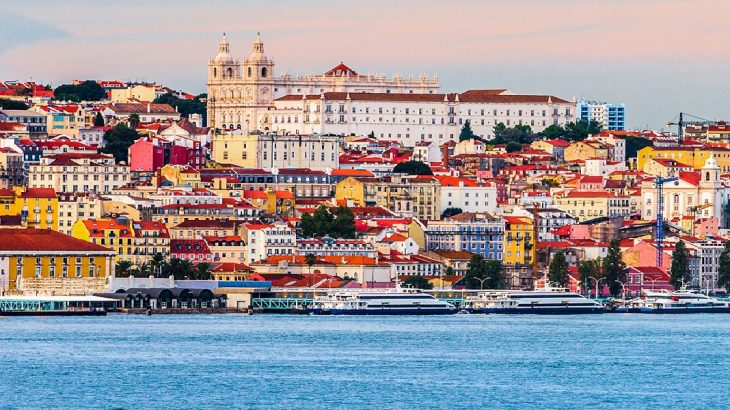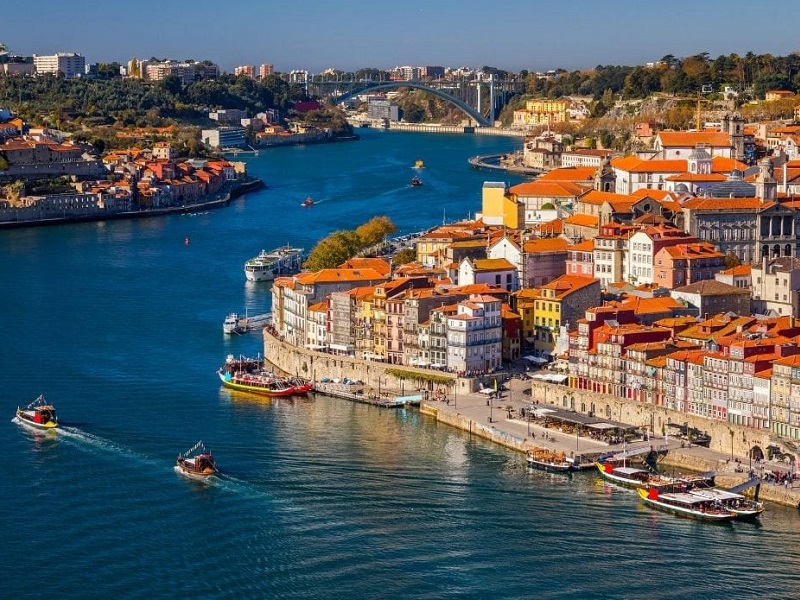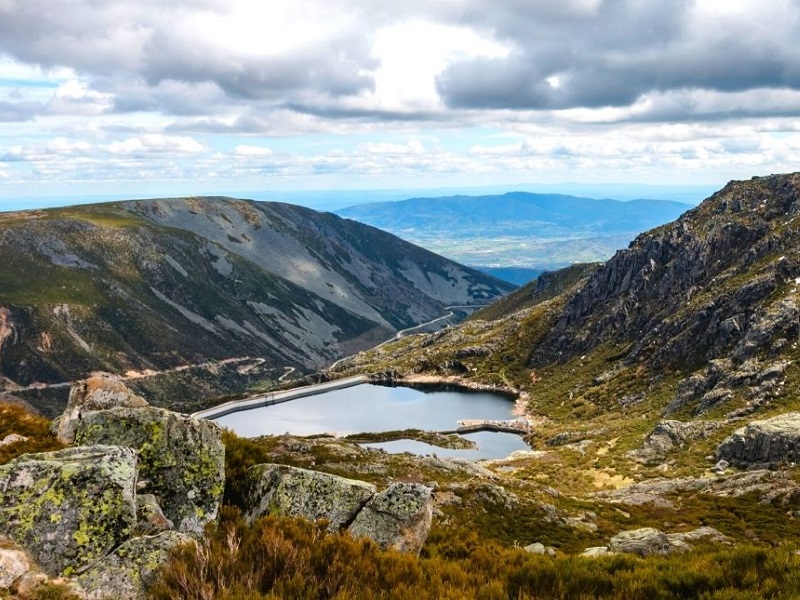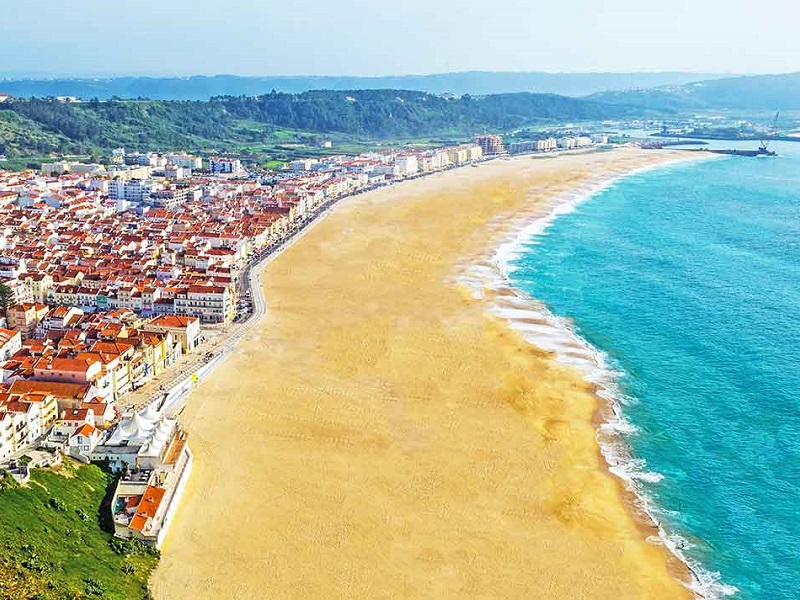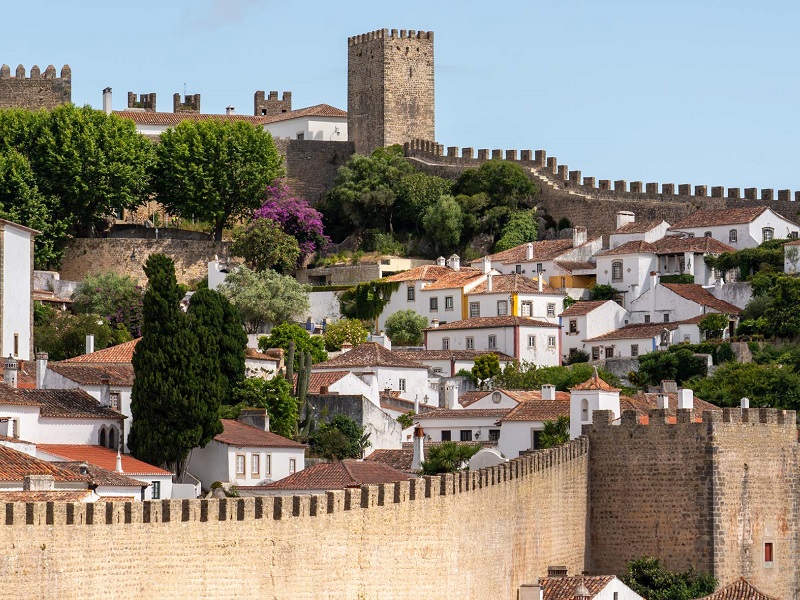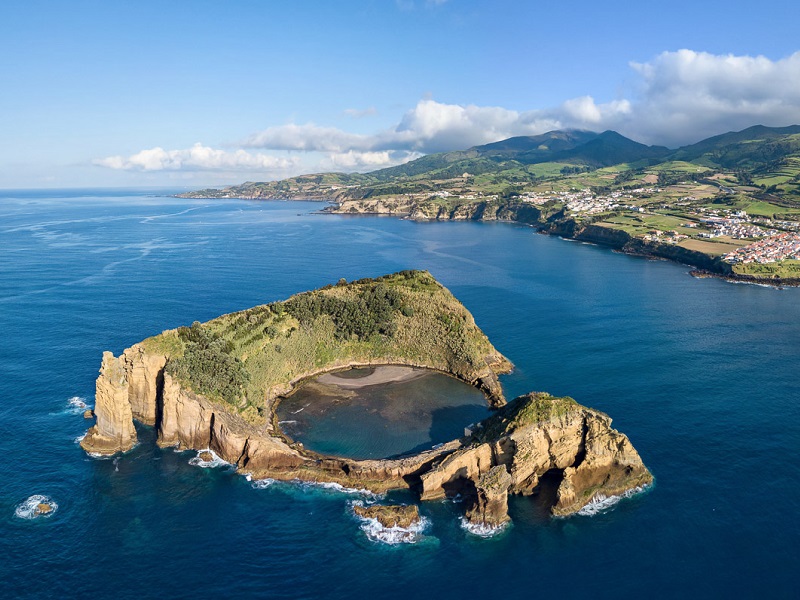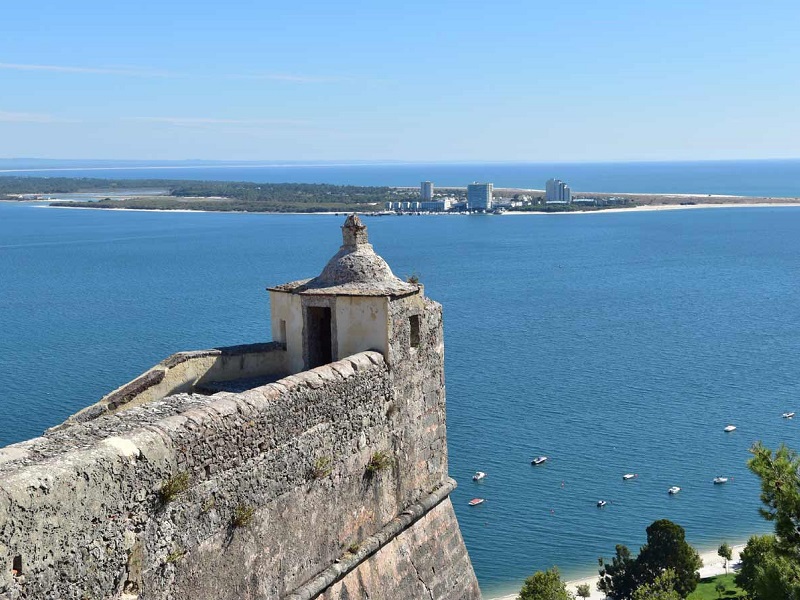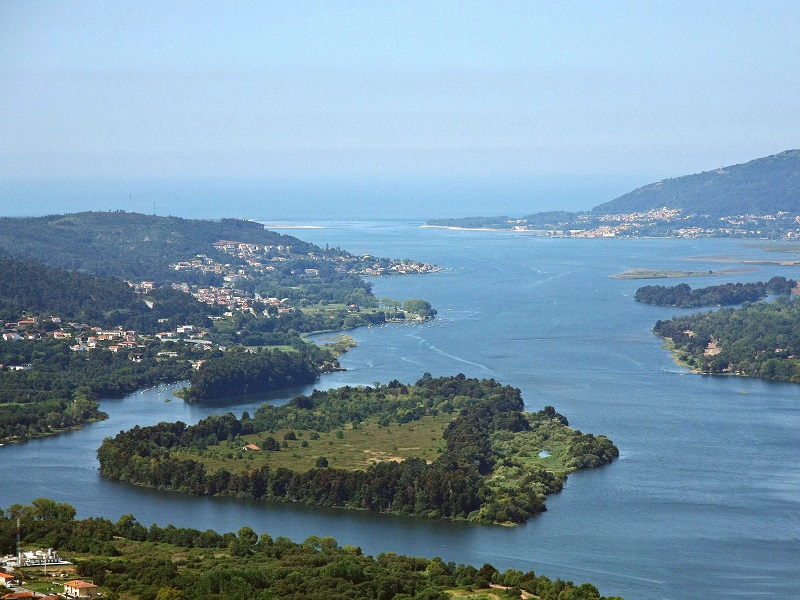Located on the western coast of the Iberian peninsula, Portugal is one of the oldest and most beautiful countries in Europe. Portugal is one of the most visited countries in Europe due to its idyllic climate, affordable travel costs, and wide range of attractions. From cosmopolitan cities and medieval towns and villages to lively beach resorts and spectacular national parks, this small European nation offers an incredibly diverse range of tourist attractions that attract thousands of tourists all around the year as part of Europe tour packages. If you want to escape from the crowd and immerse in the natural beauty of Portugal, check out our list of stunning places to visit in Portugal.
Lisbon
Lisbon, the stunning capital city of Portugal, is one of the most vibrant cities of Europe, and among the best cultural destinations in Europe. It is a city that offers everything from beautiful architecture to mouthwatering food, buzzing nightlife, fun festivals and great music. The almost constant presence of sunshine and the river Tagus transforms the Portuguese capital into a mirror of a thousand colors. One can visit several museums and art galleries in and around the city. Maritime Museum, Calouste Gulbenkian Museum, Ancient Art Museum, Mouraria/Martim Moniz, Modern Art Centre, São Jorge Castle, Carmo Convent and Jerónimos Monastery are some of the popular places to visit in Lisbon. If you want to experience Lisbon culture as part of Europe Packages then Festa de Santo Antonio festival is the best time during this festival the people of Lisbon hit the streets, parading with costumes of every colour, and party to celebrate the life of their patron saint. Besides, Lisbon is also home to some of the best beaches in Europe.
Sintra
Sintra is a picturesque town set amidst the pine-covered hills of the Serra de Sintra in Portugal. Known for its rippling mountains, thick forests, exotic gardens and exquisite palaces and fairy tale castles, this Portuguese town is one of the wealthiest municipalities in Portugal and among the best offbeat destinations in Europe. Once the royal town of the country, Sintra now holds UNESCO world heritage status and attracts tourists from all over the world. Sintra Palace, Quinta da Regaleira, Pena Palace, Cabo da Roca, Castle of the Moors, Park and Palace of Monserrate, Palace of Queluz, Praia da Adraga and Praia da Ursa are the must visit places in Sintra.
Porto
Situated at the mouth of the River Douro, Oporto or Porto is the second largest city in Portugal after Lisbon. The city rewards visitors with a very different experience from that of the capital Lisbon with its robust granite architecture and commercial disposition. Endowed with 14th-century walls, medieval winding streets, colorful picturesque houses, baroque churches, bell towers, ornate tiles, and cafe-dotted plazas, it is one of the popular places to visit in Portugal. Some of the popular attractions in Porto are Torre dos Clérigos, Sé, the city’s cathedral, Ponte Dom Luís I, and the spectacular double-decked iron bridge that spans the Douro and connects the city with Vila Nova de Gaia. A leisurely stroll along the Ribeira, a UNESCO World Heritage Site, delivers a tangible sense of history, where you can gaze at the river Douro or just enjoy live music.
The Algarve
Along the south coast, the Algarve in southern Portugal is a long stretch of towns and beaches from Lagos to Faro. The region is home to more than 100 spectacular beaches scattered along its 155 km of golden coastline. The bustling cities and quaint towns of the region are offering delights of cobbled streets, historic architecture, and beautiful old churches. Faro is the capital of the Algarve region, and Lagos is the area’s hot spot for nightlife. Looped by orange groves, Silves is best known for its red sandstone castle, while Tavira is an elegant town packed with Renaissance monuments, bridges, and castles. Sunny Mediterranean climate, gorgeous beaches, picturesque towns, flower-clad hills, tranquil landscapes of olive groves, traditional whitewashed villages, fabulous cuisine, and affordable costs are just some of the reasons that make the Algarve one of Portugal’s most popular tourist destinations.
Rio Douro Valley
The valley of the river Douro is undoubtedly one of the most captivating places to visit in Portugal. This winding, terraced region is the only place in the world that can legally produce what’s called “port wine”. Famed for its production of Port and other wines, people from all over the globe visit this fascinating UNESCO World Heritage Site to sip on wine and admire the vineyard-covered hillsides. If you are a wine lover, then don’t miss to visit the wineries here and also can stay a night in one of the wine-producing estates. Visited by large number of tourists every year, it is an enchanting valley to visit in Portugal due to its natural beauty and magic landscape it offers.
Evora
The capital of Portugal’s south-central Alentejo region, Evora is one of the most beautifully preserved medieval towns and is a UNESCO World Heritage Site. This ancient city is home to one of the world’s oldest universities, The University of Evora, which was founded in 1559. With its 14th century walls, narrow, winding lanes, white-washed houses, this medieval town houses a 2000-year-old Templo Romano, a 16th-century aqueduct that can be followed by foot for five miles and the incredible Capela da Ossos (Chapel of Bones) which displays the full skeletons of over 5000 Evora residents that makes it one of the most unforgettable places to visit in Portugal. Besides, the Alentejo countryside around Evora adds more beauty with its olive groves, fortified villages and sun-bleached plains.
Coimbra
Situated on the banks of the river Mondego, Coimbra is a riverfront city in central Portugal. Served as the country’s medieval capital for over 200 years, it is now home to the country’s oldest and most prestigious Coimbra University. Built on the grounds of a former palace, the University is one of the oldest continually operating, degree-seeking institutions in the world. But Coimbra’s greatest claim to fame is its library- the Biblioteca Joanina. This Baroque-styled library is known for its gilded and marbled wood and frescoed ceilings and has been listed numerous times as one of the most beautiful libraries in the world. Also, don’t miss to visit the 12th-century Romanesque cathedral Se Velha, two former historic convents, and the Igreja de Santa Cruz, consecrated in 1131, which contains the tomb of Portugal’s first king, Afonso Henriques.
Parque Natural da Serra da Estrela
Serra da Estrela’s Natural Park, commonly known as Serra da Estrela, is Portugal’s largest and oldest protected area. Occupying an area of around 1000 sq. km, this park is the source of the rivers Mondego, Zezere, and Alva. The park also contains the highest point in mainland Portugal, the Torre, which stands almost 2000 m above sea level. Hikers can choose from an expansive network of high-country trails with stupendous vistas, and the region’s fascinating mountain villages make perfect bases for outdoor adventures. Besides, the spectacular landscape of the mountain is the natural habitat of mammals like wolves, otters, foxes, genets, and wild European rabbits along with birds such as golden eagles and common buzzards, peregrine falcons, Eurasian eagle-owls, and black kites.
Aveiro
Often called ‘The Venice of Portugal’, Aveiro is a beautiful city located on the west coast of Portugal. It is among the top Portugal tourist places. Set along a lagoon called Ria de Aveiro, this picturesque city is known for its beautiful canals, Nouveau Architecture, and colorful gondolas. Aveiro is also home to several religious buildings that include the Cathedral of Aveiro, with its prominent bell tower, and the 15th-century Convento de Jesus-featuring a lavish tomb made of marble. Also, a ride on the traditional seaweed-gathering moliceiros provide you with the stunning views of the town and the Sao Jacinto Nature Reserve on the salt marshes. Apart, the other things to do here include visiting the museum, gaze at Art Noveau buildings, or head to the sandy beaches.
Nazare
Nazare is one of the finest beach towns of Portugal located in the Oeste region of Estremadura province. The coastline of Nazare is among the most dangerous in the world due to its high waves. Fishing is one of the most popular activities carried out by the local fishermen from the centuries. The town hosts one of the popular and religious festivals dedicated to Our Lady of Nazare, a ten-day religious event. During the festival, one can witness processions, bullfights, fireworks, folk dancing and a fair. Apart, Nazare is a bustling and vibrant holiday destination, with tourists drawn by its glorious beach and enjoyable holiday atmosphere in summer whereas the winter attracts a wholly different type of tourist-daredevil surfers who come to surf the colossal waves that break off the Praia do Norte beach.
Obidos
Located in central Portugal’s Oeste region, the medieval town of Obidos is one of the most picturesque and well-preserved towns in Portugal. This town was gifted to Queen Isabel on her wedding day. Enclosed by sturdy medieval walls, the town has a timeless appeal due to its medieval ambiance. The beauty of the town lies in its trademark white houses framed in bright flowers, cafés, and handicraft stores lining a series of narrow, cobbled streets. Obidos Castle, Igreja de Santa Maria, and a museum on the town’s attractive square are the must-visit places in Obidos. Every July, Obidos steps back into time with its annual Medieval Festival, which features a costumed parade, jugglers, wandering minstrels, jousting knights, performance shows, and a handicraft fair showcasing medieval wares and foods like spit-roasted meat and tasty sausages.
Azores
Located in the Mid-Atlantic Ocean, the autonomous region of the Azores is an archipelago of nine islands characterized by volcanic landscapes, fishing villages, vineyards, green pastures, and one of the best marine habitats in the world. Each of the nine islands is spread over an area of 600 km from Corvo to Santa Maria. The largest, Sao Miguel is a wonderful rolling green oasis with plenty of hiking trails, waterfalls, and beautiful lakes. Hiking around the islands is a delight as verdant valleys and mountains overlook scenic shorelines riddled with rugged cliffs, secluded coves, and pristine beaches. Among its most impressive sights are the towering Mount Pico, the highest peak in the archipelago, and the idyllic crater lake of Lagoa do Fogo. These islands are also hot spots for diving, hiking, and water sports. They are best known for whale and dolphin watching. Sperm whales, common dolphins, and bottlenose dolphins can be seen passing through on migration routes all year round whereas blue whales, humpbacks, and orcas are seen between April and June.
Setubal Peninsula
The Setubal Peninsula is a little-known spot in Portugal located to the south of Lisbon. Bordered by the wine region of Tejo, it is one of the perfect holiday spots with wonderful food and beautiful national parks along the Portuguese coastline and majestic mountain ranges. Also, a trip to the Setubal Peninsula means the chance to discover some of Portugal’s best-fortified wines that are internationally recognized for their remarkable and outstanding qualities. If you’re seeking a bit more solitude, head down to the Parque Natural da Arrábida at the southern end of the peninsula where you will find cliffs covered with thick vegetation, picturesque coves, and beaches such as Praia do Portinho da Arrábida, with fine sand, azure waters and the ruins of an ancient site that dates back to Roman times.
The Minho
Comprises the northwestern province of Portugal, Minho is a verdant region of vineyard-covered valleys, mountainous wilds, isolated beaches, and picturesque river towns. The region gets its name from the river Minho. The gateway to the region is Braga, a city with Roman ruins, a fabled medieval cathedral and tranquil flower-trimmed plazas sprinkled with outdoor cafes and restaurants. Further north, visitors can find Parque Nacional da Peneda-Geres, Portugal’s only national park. Occupying more than 700 sq. km, the rocky terrain of the park encompasses dramatic mountain peaks, lush, yawning valleys, meandering streams, and deep, crystal-clear lakes. Dozens of hiking trails crisscross the reserve, taking tourists past old Roman roads, castle ruins, or sparkling waterfalls.
